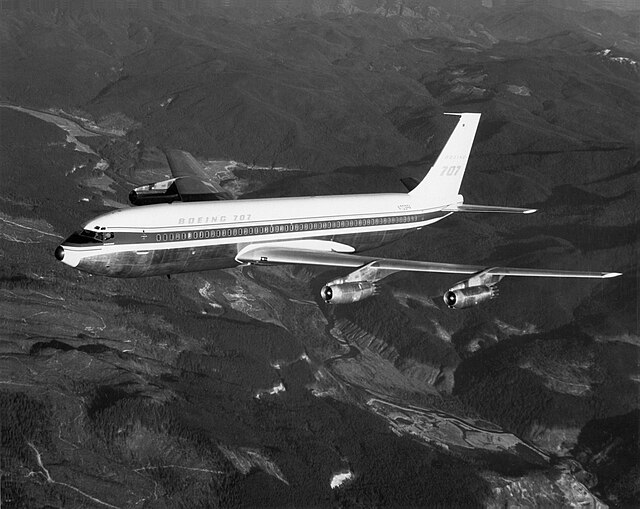The Boeing 707 is an early American long-range narrow-body airliner, the first jetliner developed and produced by Boeing Commercial Airplanes.
Developed from the Boeing 367-80 prototype first flown in 1954, the initial 707-120 first flew on December 20, 1957.
Pan Am began regular 707 service on October 26, 1958.
With versions produced until 1979, the 707 was a swept wing quadjet with podded engines. Its larger fuselage cross-section allowed six-abreast economy seating, retained in the later 720, 727, 737, and 757 models.
Boeing 707
The 707 was based on the 367-80 "Dash 80"
The six-abreast cabin
Early 707-120 in Boeing livery. This aircraft, N709PA, would later crash in 1963 as Pan Am Flight 214.
A narrow-body aircraft or single-aisle aircraft is an airliner arranged along a single aisle, permitting up to 6-abreast seating in a cabin less than 4 metres (13 ft) in width.
In contrast, a wide-body aircraft is a larger airliner usually configured with multiple aisles and a fuselage diameter of more than 5 metres (16 ft), allowing at least seven-abreast seating and often more travel classes.
Four-abreast cross-section
Narrow-body Boeing 737-300 in front of a Boeing 777-300ER wide-body
Airbus A320 (foreground) and Boeing 737-900 (background), both narrow-bodies
Two-abreast Beech 1900








